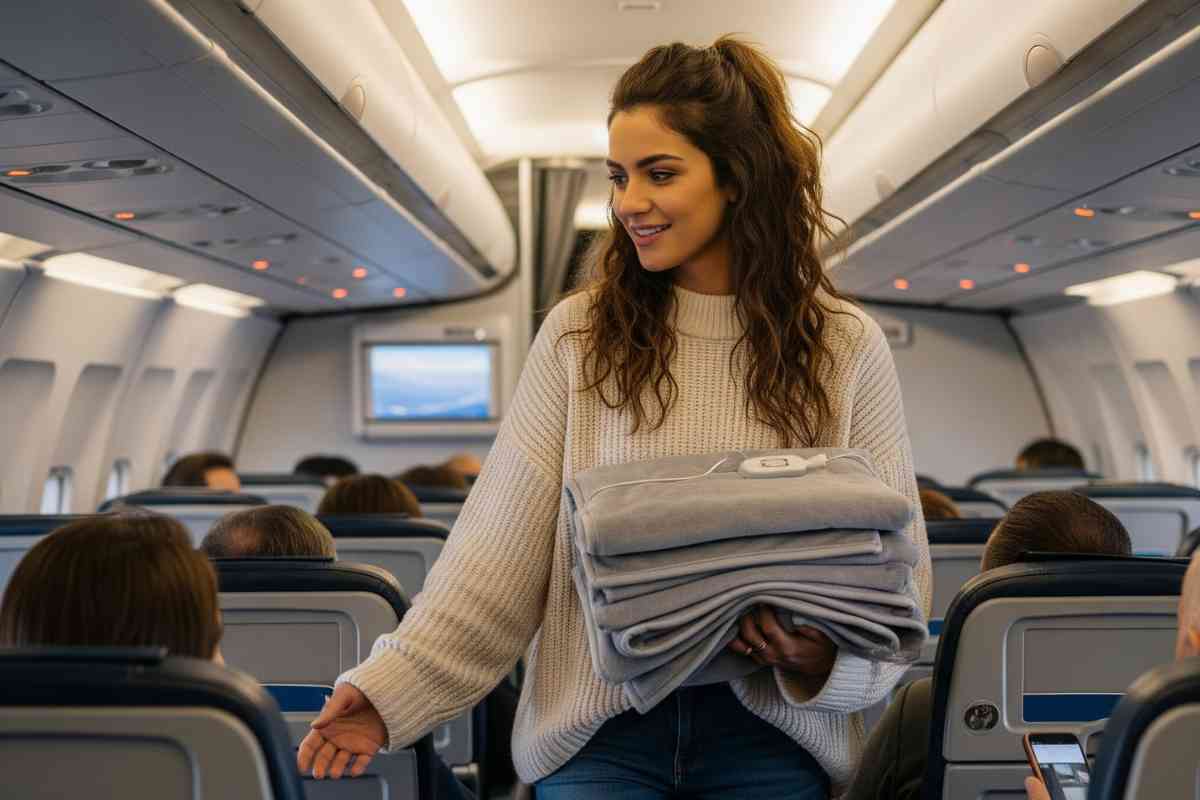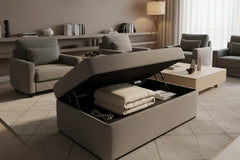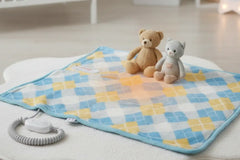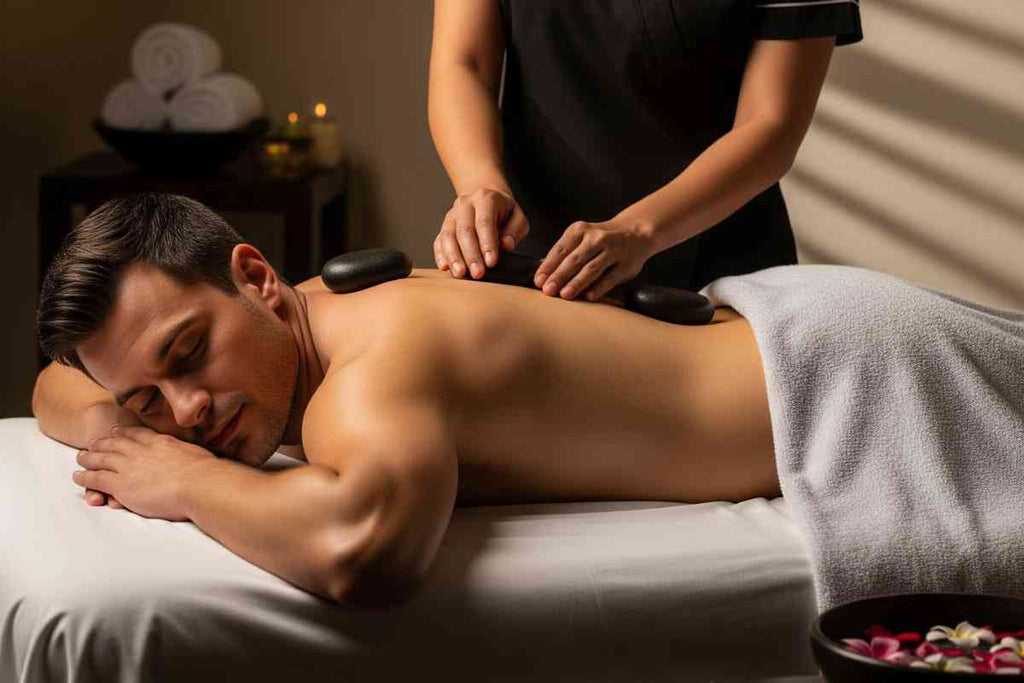Can You Bring A Heated Blanket On A Plane?

Nothing ruins a flight like being freezing cold for hours. But rules about electronics, batteries, and in-flight use can be confusing.
Here’s exactly what TSA and airlines say, plus smart packing tips, so you can stay warm and stress-free at 30,000 feet.
Table of contents
Key Takeaways
Heated Blankets Are TSA-Approved: You can pack heated or electric blankets in both carry-on and checked luggage.
Use Battery-Powered, Not Plug-In: Most airlines allow battery-operated heated blankets but restrict plug-in types.
Check Battery Limits: Lithium batteries must meet FAA size rules and are usually allowed only in carry-ons.
Monitor for Safety: Always inspect your blanket and keep an eye on it during use to prevent fire risks.
- Follow Airline Etiquette: Only use heated items after takeoff, keep them discreet, and be mindful of others.

Can I Bring a Heated Blanket on a Plane?
Yes, you can bring a heated blanket on a plane in both carry-on and checked bags, according to the TSA.
Most airlines allow battery-operated or USB-powered blankets, as they don’t need to be plugged into the plane.
According to Emirates, lithium batteries under specific limits are allowed in carry-on bags only.
While the FAA hasn’t reported flight-related incidents, overheating issues have led to recalls, so always check for damage or recalls before flying.
Can You Bring an Electric Blanket on a Plane?
Yes, you can bring an electric blanket on a plane, both in carry-on and checked luggage, according to the TSA.
There have been no reported safety concerns, and according to the TSA, it’s perfectly allowed.
Just be sure it fits your airline’s size and weight rules. With proper packing, your electric blanket can travel safely and keep you comfortable in the air.
How Do I Find Out If My Airline Allows Heated Blankets?
According to TSA, heated blankets are allowed in carry-on and checked bags, but airline rules may differ.
Some airlines prohibit plug-in types due to power or safety issues. Battery-powered blankets are generally safer.
To confirm, check your airline’s website or contact customer service. Travelers say outlets rarely support electric blankets, so dressing warmly or using non-electric options is the best choice.
Can a Heated Blanket Interfere with Aircraft Electronics?
There are no FAA or airline reports showing that heated blankets cause electronic interference on planes.
Unlike devices like phones or laptops, heated blankets don’t emit radio frequencies, they just generate heat.
While the FAA regulates personal electronics, heated blankets are usually safe. Still, airlines may have rules about their use, so always check and follow crew instructions for safety and comfort during your flight.
Is There a Limit on Lithium Battery Size for Flights?
Yes, there are limits. According to the Federal Aviation Agency, lithium battery-powered bags must go in carry-on unless the battery is removed and packed safely.
In checked baggage, only very small batteries are allowed. Devices with lithium batteries must be completely turned off and protected from damage or accidental activation.
How Should I Pack My Heated Blanket for Travel?
According to Electrical Safety First, fold your heated blanket loosely and store it in a cool, dry place without heavy items or mothproofing chemicals.
For safer travel, pack it in your carry-on to prevent damage or loss. Use a compression bag to save space and always follow the manufacturer’s storage recommendations.

Should a Heated Blanket Be Packed in a Specific Type of Bag?
Packing a heated blanket in a tight or unpadded bag can damage the internal wires and lead to overheating.
To stay safe, use a padded or fire-resistant travel bag, like those made for electronics or batteries.
These protect against impact, moisture, and heat. Store the blanket loosely folded, and keep cords separate to prevent kinks and ensure safe use later.
Should I Bring Extra Batteries for My Heated Blanket?
A heated blanket’s battery typically lasts around three hours with continuous use, but cold weather can cut that time in half.
Since outdoor temperatures reduce battery efficiency, it’s wise to bring a spare, especially for longer trips.
While not always required, having a backup ensures warmth and comfort, making it a practical choice for travel or chilly outdoor adventures.
Is It Better to Charge My Heated Blanket Battery Before Flying?
Charging your heated blanket battery before flying might seem smart, but it’s safer to avoid mid-flight charging.
Many airlines prohibit charging lithium batteries due to fire risks. Also, a fully charged battery can overheat more easily. Always check airline policies, and charge only up to 80–90% to stay safe.
What Should I Do Before Using a Heated Blanket on a Flight?
Before using a heated blanket on a flight, inspect it for damage, look for frayed cords, exposed wires, or scorch marks.
Check airline rules, as some restrict powered items. Always confirm with a flight attendant before use, and never force it into unsuitable power sockets.
Should I Monitor My Heated Blanket While It’s in Use?
Yes, monitoring your heated blanket while it’s on is essential for safety. According to the Electrical Safety Foundation International, heating pads and electric blankets cause around 500 fires each year, mostly from units over ten years old.
The U.S. Consumer Product Safety Commission advises turning off blankets when not in use or before sleeping unless labeled for overnight use.
Always check for damage like frayed cords or scorch marks, and follow all manufacturer guidelines to reduce fire and burn risks.
Can I Use a Heated Blanket During Takeoff and Landing?
No, heated blankets, especially battery-powered ones, are usually not allowed during takeoff and landing due to safety rules.
The FAA and airlines restrict electronic devices during these phases to avoid interference and fire risks.
Always follow crew instructions and check your airline’s specific policy before using one on board.
What Etiquette Should I Follow When Using Heated Items on Planes?
Check Airline Rules First
Check your airline's rules before packing a heated blanket or device. TSA handles airport security, not in-flight use, so passing screening doesn't guarantee onboard approval.
Battery-powered heated items are usually allowed in carry-ons; plug-in devices may not be.
Policies vary by airline, especially international ones. Visit the airline’s website, use chat support, or call customer service to confirm.
Avoid Strong Smells
Strong-smelling food can quickly make an airplane cabin unpleasant. Avoid items like fish, curry, or garlic-heavy meals, which may bother nearby passengers.
Even portable food warmers can spread odors. Instead, pack mild snacks like plain sandwiches or rice-based meals.
Test heated items at home, if the smell lingers, it will be worse on a plane. If someone else’s food has a strong odor, inform a flight attendant discreetly rather than confronting the person.
Keep It Discreet
Using heated items on a plane is fine if you're discreet. Choose compact, travel-friendly gear like battery-powered blankets or flight-safe heated neck pillows.
Turn them on after takeoff and keep them hidden under a blanket or jacket. Avoid large or flashy devices.
If asked, calmly explain the item is airline-safe. Stay warm without drawing attention or disturbing others.
Avoid Using During Takeoff and Landing
Wait until your flight reaches cruising altitude before using heated items. During takeoff and landing, all electronics, including heated blankets or pads, must be off and stored for safety and access to emergency exits.
If left on by mistake, switch it off immediately, crew may remind you. Keep everything unplugged and packed until the seatbelt sign is off.
Respect Others’ Comfort
Heated items can help you feel better, but be mindful of others. Even scent-free, quiet devices might still bother nearby passengers.
Avoid warming food with strong smells or allergens. Don’t take up extra space, and if unsure, ask your seatmate or a flight attendant. Courtesy matters in close quarters.
Do Airlines Provide Heated Blankets to Passengers?
Some airlines offer heated blankets, typically in business or first class. Economy passengers usually don't receive them.
Emirates provides heated blankets in premium cabins. Asking for one in economy rarely works.
Airlines don’t supply battery-powered heated blankets, though some travelers bring their own. International carriers often have better blanket options than U.S. airlines.
Why Should You Bring Your Own Blanket Instead of Using the Airline's?
Airline blankets aren’t always washed after every flight, especially on shorter, domestic routes.
While some are cleaned and sealed after use, others may just be refolded. Cleaning routines vary, so bringing your own ensures comfort and better hygiene.
What Are Non-Electronic Ways to Stay Warm on a Flight?
Layer Up : Dress in multiple layers so you can add or remove clothing based on the cabin temperature. Start with a base layer, then add sweaters, hoodies, or jackets.
Bring a Travel Blanket or Shawl : These are lightweight and easy to pack, and they help trap body heat during cold flights.
Wear Compression or Wool Socks : These help keep your feet warm and improve blood flow, which is important on long flights.
Pick a Warm Seat : Choose a window seat if possible—it lets you lean against the wall and stay tucked in. Avoid seats near exits, where it can get drafty.
Drink Something Warm : Sipping hot tea, coffee, or even warm water helps maintain your body temperature from the inside.
- Use a Scarf or Neck Pillow : Wrap a scarf around your neck or use a cozy neck pillow to block cold air and keep your upper body warm.




